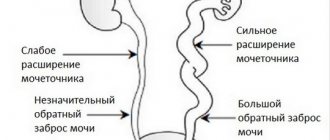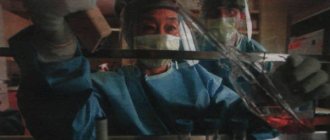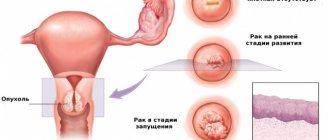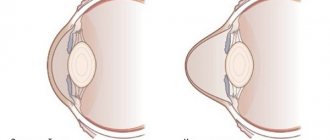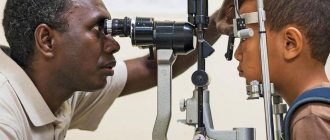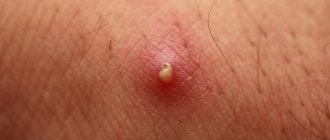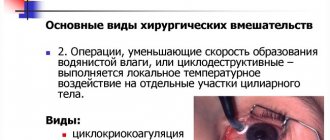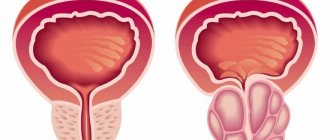Today we will talk about how chickenpox is transmitted in children and adults and about possible misconceptions associated with the routes of transmission of this disease. There are many sources on the Internet where they write about chickenpox and the routes of transmission, which are not always reliable. Even the well-known misconception that chicken pox can be treated exclusively with brilliant green can often be found on the Internet, but brilliant green has no therapeutic or antiviral effect.
How does chickenpox manifest: symptoms and signs
Immediately after infection, chickenpox does not manifest itself in any way. The sick person feels normal for almost the entire incubation period. And only towards the end of it do the first signs of chickenpox appear.
The initial manifestations resemble those of an acute respiratory viral infection, which can be mistaken for chickenpox.
It is important to correctly understand the symptoms in order to begin appropriate treatment in a timely manner.
We wrote about the ways in which chickenpox is transmitted to people around us here.
Temperature
Children and adults who have not had chickenpox show similar symptoms. But in adolescents and mature patients, the signs of the disease are more pronounced, and the infection itself occurs in more severe forms.
Elevated temperature with chickenpox is a normal reaction of the body , which resists the spread of the virus. Temperature readings vary depending on the form of the disease.
A mild version of the infection is accompanied by a slight rise in temperature - up to a maximum of 37.5°. There is no need to knock it down; it will go away on its own in a few days.
More often, children suffer from moderate form of chickenpox; the mark on the thermometer can reach 38 – 38.5°. The temperature lasts from 2 to 5 days.
A severe form of the disease also occurs in children, when temperatures are high – up to 40°. But more often this is typical for adolescents and adult patients. This condition can last up to 10 days.
Typically, a high temperature precedes a rash and is accompanied by general weakness, fever, and headache. Nausea, vomiting, diarrhea - such manifestations of the disease are also not uncommon.
Rash
General malaise and high temperature are only the first “bells”. The infection then manifests itself as a characteristic symptom – rashes.
The special nature of the rash is a sign that helps to accurately diagnose chickenpox:
- The rash usually first appears on the scalp, hair growth area, back and abdomen. Then a rash appears on the face and body. Manifestations of chickenpox in the form of spots can be found on the butt, arms, and legs.
- The localization of rashes varies - in some cases they appear on the genitals, in the eyes, in the mouth.
- The first pimples that form on the skin quickly transform into bubbles (vesicles), which contain a clear liquid with a high concentration of the virus.
- On average, after 2 days, the liquid exudate flows out of the blisters, the resulting ulcers dry out and become covered with crusts.
- If you do not scratch the itchy formations, then everything will heal over time, leaving no marks on the skin.
- Chickenpox does not cause a rash on the palms and soles of the feet. In children, a mild version of the disease occurs, when there are very few rashes, the temperature and health are normal. A small rash can quickly disappear after it appears, and after a while new pimples can easily be confused with insect bites or allergies. In this case, the development of infection may not be noticed.
Chickenpox without blisters is extremely rare. Doctors are inclined to believe that the disease cannot occur without rashes at all, because they are a characteristic sign of this infection.
During illness, the rash appears in waves. And each new wave is accompanied by an increase in temperature.
A distinctive feature of chickenpox is the fact that at the same time there are rashes of different stages on the skin - spots, pimples, blisters, crusts.
Other manifestations
In adults, chickenpox is more difficult to tolerate, and the symptoms of the disease are more pronounced in them:
- in such patients, temperature rises to high values are more often recorded - up to 40˚C and even higher;
- lymph nodes become enlarged and become painful on palpation;
- frequent rashes on the labia in women and on the penis in men;
- It is not uncommon for the rash to localize in the eye area, for example, on the eyelid;
- carriers of HIV infection may develop abscesses;
- The atypical course of chickenpox is accompanied by severe symptoms - dysfunction of the central nervous system: photophobia, convulsions, drowsiness, nausea, vomiting after eating.
The Union of Pediatricians of Russia will tell you what you need to know about chickenpox:
What is chickenpox?
There are a number of diseases that are best dealt with in childhood. One of them is chickenpox. Chickenpox is an infectious disease caused by type 3 herpesvirus. The disease is contagious and is transmitted by airborne droplets through direct contact with an infected person or when staying in the same room with him.
The virus enters the human body through mucous areas (nose and mouth). The blood spreads the disease throughout the body and the disease penetrates the skin. Reproduction of the virus leads to decreased immunity.
When the disease occurs, a rash appears on a person’s skin, which is very itchy. It consists of small blisters filled with clear liquid. The second characteristic symptom is a sharp high temperature (39-40°), which can persist in the first two days or throughout the infection.
The virus remains in the human body forever, and re-infection is almost impossible. Subsequently, the virus may manifest itself in the form of herpes zoster (or shingles) in cases where the immune system is weakened.
What does chickenpox look like (photo)
How does the disease progress?
How does chickenpox progress in the body of the sick person? The pathogenesis of chickenpox includes several stages:
- viruses multiply on the mucous membranes of the mouth, nasopharynx and respiratory tract, their number increases sharply;
- pathogens penetrate the lymphatic system, its functioning is inhibited, the activity of T-lymphocytes, which are responsible for immunity to viruses, decreases;
- after viral particles enter the blood, the incubation period ends and symptoms of chickenpox begin to appear - weakness, fever, signs of intoxication;
- the virus penetrates the spinal nerves, where it remains in an inactive state for life. If there is a significant weakening of the immune system, the virus becomes more active and can cause the development of herpes zoster;
- The infectious agent settles in the skin cells. A rash forms, which begins with spots, then passing through the stages of pimples, vesicles, crusts;
- the immune system fights the infection by producing specific antibodies that will protect the person who has had chickenpox from repeated infections. However, no one is immune from relapse of the disease, we have already written about this in this publication.
In the typical course of chickenpox, all stages of the disease with characteristic symptoms are expressed. New rashes appear in waves, after which the patient’s general condition improves and he is on the mend.
The patient becomes non-infectious after at least 5 days have passed since the last rash has dried out.
The rudimentary form in children occurs without obvious symptoms; sometimes parents do not even notice that the child has chickenpox.
In adults, atypical forms of chickenpox are characterized by a severe course with characteristic signs. Infection occurs:
- gangrenous;
- hemorrhagic;
- generalized.
We have a separate article about how many days chickenpox lasts.
Do children under 1 year of age get chickenpox?
There are such cases, but they are very few. This is due to the fact that maternal immunity is present in the child’s body until the age of 1 year.
Do children under 1 year old get chickenpox?
- Accordingly, there is a very low probability that the child will get sick. This can happen if the child has an immunodeficiency.
- A child may be born with chickenpox if the mother becomes infected with the disease on the eve of birth.
- There have also been cases where, immediately after the mother was infected, the child's chickenpox was asymptomatic, but antibodies were detected in the blood.
Rashes
Treatment methods for adults at home
Although chickenpox is more severe in adults, it can be treated at home. But it must be under the supervision of a doctor who will prescribe all the necessary medications.
Treatment methods for infection are as follows:
- Bed rest and rest, to mobilize all resources to fight the virus.
- Proper nutrition - light, pureed food is recommended. Canned food, fried foods, pickles and smoked foods, and sweets are prohibited. Drinking plenty of fluids during this period is beneficial.
- Maintain personal hygiene - water procedures as recommended by a doctor, frequent changes of underwear and bed linen.
- Taking medications prescribed by a doctor.
- Local treatment of rashes, including on the genitals.
- Mouth rinses.
- Quarantine for up to 3 weeks.
Several groups of medications are used in the treatment of chickenpox:
- antiviral - Acyclovir and its analogues;
- antihistamines - Cetirizine, Loratadine, Suprastin;
- antipyretics – Panadol, Ibuprofen;
- antibiotics - prescribed for complications (Cefazolin, Oxacillin);
- immunostimulating agents - Cycloferon.
What medications need to be taken is decided by the attending physician. Additional use of folk remedies and homeopathy is possible:
- celandine decoction for baths;
- calendula decoction for rubbing the skin;
- mixtures of oils - bergamot and olive, which relieve inflammation and reduce itching;
- drugs Alpizarin, Helepin, Flacozide.
Internal chickenpox is treated depending on the location - the doctor prescribes specific therapy for the affected organ.
How to treat chickenpox in adults:
The main causes, symptoms and treatment of mononucleosis in adults are discussed in this publication.
If you are interested in the causes and treatment of herpes sore throat in children, read our article.
You will find a photo of herpes on the eyes (ophthalmoherpes) here: https://udermatologa.com/zabol/gerp/oftalmogerpes-gerpes-na-glazu-foto-lechenie-simptomy/
About treatment
Treatment for chickenpox is usually done at home.
The pediatrician examines the patient, makes a diagnosis and prescribes therapy. But parents should be vigilant, carefully monitor their child’s condition and immediately call a doctor if alarming symptoms appear:
- breathing problems;
- severe weakness;
- seizures;
- severe muscle pain and headaches;
- if, due to a rash in the mouth, the child is unable to take fluids;
- if skin rashes become more abundant and unhealthy, ulcers appear, blisters are filled with cloudy liquid.
Infants are at risk. But the baby receives antibodies even before birth, from the mother. If there is no immunity and the baby becomes infected, the disease can be protracted, with high fever and profuse rashes. To avoid intoxication and complications on the internal organs of the heart, nervous system, children under one year old with a high fever and a profuse rash are hospitalized in medical institutions, where drugs are administered to mitigate the course of the disease.
How to treat children: all available means
There is no specific treatment for chickenpox; medications are used depending on the manifestations of the disease:
- Antipyretic tablets or syrups - Paracetamol, Nurofen, Panadol - will help bring down a high temperature (above 38°);
- if necessary, the doctor can prescribe immunomodulators and antiherpetic drugs such as Anaferon, Viferon;
- sedatives are necessary if children are too excitable and capricious during illness;
- antibiotics are prescribed only if a bacterial infection has occurred;
- formations on the mucous membranes are treated with extreme caution. This can be a rash on the head of the penis in boys and on the penis in girls. They are treated with Fukortsin, the children are washed with soda water, chamomile infusion;
- It is recommended to lubricate the oral mucosa with Miramistin - it is safe to use even in infants (you will find more information about the methods of treating chickenpox in infants in the following material). They also use products that help alleviate the condition during teething - Kamistad, Kalgel or Chlorophyllipt solution (oil);
- You can rinse your mouth with weak solutions of boric acid, potassium permanganate, furatsilin. Folk remedies are also used - decoctions of calendula, chamomile, and sage. The rashes are lubricated with sea buckthorn oil; What other ways exist to combat chickenpox in the mouth and throat will you learn in the next publication;
- Betadine in the form of a solution and ointment is used to treat the skin and mucous membranes. This is a complex action drug;
- the antiviral drug Interferon is used in some cases to reduce the external manifestations of infection.
In the first days of the acute stage of the disease, when the child has fever and poor general health, he is advised to go to bed.
As their condition improves, children begin to lead a normal lifestyle - play, move a lot.
It is necessary to ensure that the child does not overheat, does not sweat, and change his clothes often. A small patient should drink a lot, but there is no need to force feed him. The diet during this period should be gentle, the food should be light, pureed, preferably liquid.
Chickenpox cannot be cured quickly - the disease must go through all the required stages. But parents are obliged to help the child get rid of unpleasant sensations and monitor his well-being.
What to apply to chickenpox, except brilliant green
The appearance of a child with green specks leaves no doubt - the baby has chickenpox, so parents treat the rash with a solution of brilliant green.
Zelenka dries out pimples and acts as a disinfectant, preventing the development and spread of secondary bacterial infections.
But, instead of traditional brilliant green, you can use a number of other drugs to dry out blisters and speed up healing:
- Fukortsin - its effect is similar to a solution of brilliant green, but this product is washed off from the skin much better;
- Calamine - this lotion dries out blisters, cools inflamed skin, reduces itching and swelling; Read about its other beneficial properties at the link;
- Tsindol - this suspension (mash) has a drying and antibacterial effect; Instructions for using Tsindol for chickenpox can be found here;
- You can also cauterize rashes with local antiseptics - also use an aqueous solution of potassium permanganate, Castellani liquid, hydrogen peroxide, methylene blue, salicylic alcohol (with caution, it can dry out the skin);
- Acyclovir is an antiviral agent in the form of a cream or ointment applied to the blisters. The drug reduces the activity of the herpes virus that causes chickenpox;
- zinc ointment – relieves inflammation, dries damaged skin, prevents bacteria from spreading;
- Viferon - gel accelerates the healing of the affected skin surface and the falling off of the resulting crusts.
All these drugs should be applied only to clean skin. “Colored” products are good because they help mark new rashes.
This makes it easier to track the marked blisters and record when the rash stops appearing.
Iodine is not recommended for chickenpox, and here's why - it increases itching, causes allergies, has a warming effect (but what is needed, on the contrary, is a cooling effect), and can cause skin burns.
The causes, symptoms and signs, methods of treatment and prevention of the disease, as well as photos of herpes on the fingers are presented in this article.
What does it mean when igg antibodies to cytomegalovirus are detected? Our publication will answer the question.
Is it possible for a child to get chickenpox a second time?
Usually, having had chickenpox in childhood, a person should acquire stable immunity, which will prevent him from becoming infected again. But in practice there are known cases when both adults and children bothered to get chickenpox a second time. The reason for this is usually a decrease in immunity, so it is not stable and provokes repeated outbreaks. To avoid recurrence of the disease, as well as other phenomena, it is necessary to take preventive measures to strengthen the functioning of the immune system.
How to relieve or relieve severe itching
The skin with chickenpox itches unbearably, the itching is simply unbearable. Antihistamines will help alleviate the condition of a child or adult:
- Their choice is quite large, which is best to use, your doctor will advise. It is possible to use Suprastin, Diazolin, Claritin, Tavegil, Loratadine, Zyrtec, Zodak.
- The drug Erius has not only an antihistamine, but also an anti-inflammatory and anti-inflammatory effect.
- The modern product Poksklin (gel), in addition to eliminating itching and cooling the skin, also has an antibacterial effect.
- Fenistil gel relieves swelling, reduces itching and pain, and cools the skin.
- To treat the skin, solutions (oil and alcohol) of Chlorophyllipt are used.
Among traditional medicines, for severe itching in the mouth, rinsing with sage decoction is used. You can soothe skin that itches a lot by taking baths with an infusion of yarrow or barley decoction.
How to remove scars after illness
Marks on the skin - pockmarks, scars, scars are formed if the blisters rot or become inflamed if you scratch and pick off the itchy rashes. The marks remain even after severe forms of chickenpox.
To prevent the appearance of scars, preventive procedures should be started immediately after the scabs begin to fall off.
Let the children's doctor tell you which medications to use. For children, it is preferable to use creams and ointments made from natural herbal ingredients, without the use of antibiotics and hormones.
The following products help prevent the formation of scars:
- Bepanten is an ointment or cream that helps normalize metabolic processes in the skin and restore its integrity;
- Contractubex is a gel that can cope with only minor skin irregularities. Dermatix has a similar effect;
- Dexpanthenol helps heal and regenerate damaged skin, recommended for use by young children;
- in the fight against scars and cicatrices they also use Medgel (only as prescribed by a doctor), Mederma ointment;
- cocoa butter – increases skin elasticity and its ability to regenerate.
More radical methods include laser resurfacing, subcutaneous injections of drugs that help smooth the skin surface, and physiotherapy - electrophoresis and phonophoresis procedures.
The point of view of Dr. Evgeniy Komarovsky
Dr. Komarovsky’s opinion about chickenpox is that it is better to vaccinate a child against this infection than to allow him to become infected in the hope that the baby will easily overcome the disease and will never get sick again.
Chickenpox infection can be dangerous if the child has a chronic illness or immunodeficiency.
But, if infection does occur, then a well-known pediatrician advises parents the following:
- make sure that the child does not scratch the rash; to do this, cut his nails short, and put on gloves for the baby;
- use antihistamines and external agents prescribed by a doctor against itching;
- distract the child from unpleasant sensations in every possible way;
- take care of hygiene - bathe the baby in a bath with cool water, after which the body is not wiped with a towel, but slightly blotted; we talked about exactly how to bathe and wash a child with chickenpox here;
- change underwear and bed linen every day;
- maintain a cool temperature in the children's room;
- feed in moderation, lighter than usual food. But give more water and other liquids to avoid dehydration;
- You can walk with your child 5 days after the rash has stopped and the little patient has ceased to be contagious to others;
- You should not attend kindergarten until 2–3 weeks have passed after recovery.
Evgeniy Olegovich calls the habit of treating rashes with brilliant green a personal matter for each parent and not a mandatory procedure at all.
The pediatrician is confident that this medicine will not help get rid of the infection. Crusts form over time even without the use of this product.
It is still better to smear the rashes with colorless products. Traces of brilliant green are problematic to remove; they cannot be washed off immediately with anything; it will take time for the leather to acquire its natural color.
The skin of children should be treated with gentle means:
- baby soap;
- diluted lemon juice;
- baby cream or vegetable oil;
- facial toner or makeup remover.
There are several other products that help remove traces of brilliant green - Chlorhexidine, hydrogen peroxide, alcohol (salicylic, medical), vodka.
We also recommend that you watch the video in which Evgeniy Komarovsky explains in detail the methods of treating children:
Preventive measures: how to protect yourself from the disease
There are two radically opposing approaches to the prevention of chickenpox. Some doctors believe that it is better to acquire lasting, lifelong immunity in early childhood.
This means that you need to get over chickenpox; in children it most often goes away quite easily. To do this, you should not be afraid of the child’s contacts with the source of infection, but, on the contrary, encourage them.
Although there are no guarantees that the disease will be mild and without complications, there are no guarantees.
Proponents of a different opinion do not approve of infection in early childhood - why get sick and allow the virus to remain in the body for life, albeit passively?
You can avoid contracting chickenpox altogether if you get vaccinated against this disease in time. Vaccination is not mandatory; the decision on its necessity is made by parents after consultation with a pediatrician.
Since chickenpox is a highly contagious disease, it will not be possible to prevent infection in those who are not vaccinated and have been in contact with the patient. We have separate material about the chickenpox vaccination and the vaccines used.
You can ease the course of the disease and reduce the risk of complications by strengthening your immune system. This applies to both children and adults who need:
- balanced diet;
- healthy sleep;
- taking vitamin complexes;
- sufficient physical activity;
- Adults benefit from giving up bad habits, especially alcohol.
Prevention of chickenpox in children
Parents are always concerned about whether a child will get chickenpox after possible contact with an infected child or whether he will get sick after being vaccinated against smallpox.
According to statistics, after vaccination against chickenpox, cases of the disease in vaccinated children are extremely rare. It has been recorded that even if infected, the disease passes without consequences and proceeds easily. The general condition in this case is quite satisfactory, and the rash either does not appear at all or individual pimples are observed.
Even if vaccination is not carried out, a baby with a strong immune system will tolerate smallpox more easily and will recover faster than his peer with reduced body resistance.
Moreover, with weak body resistance, the likelihood of complications is much higher. This suggests that a strong immune system is also part of the preventive measures against chickenpox.

